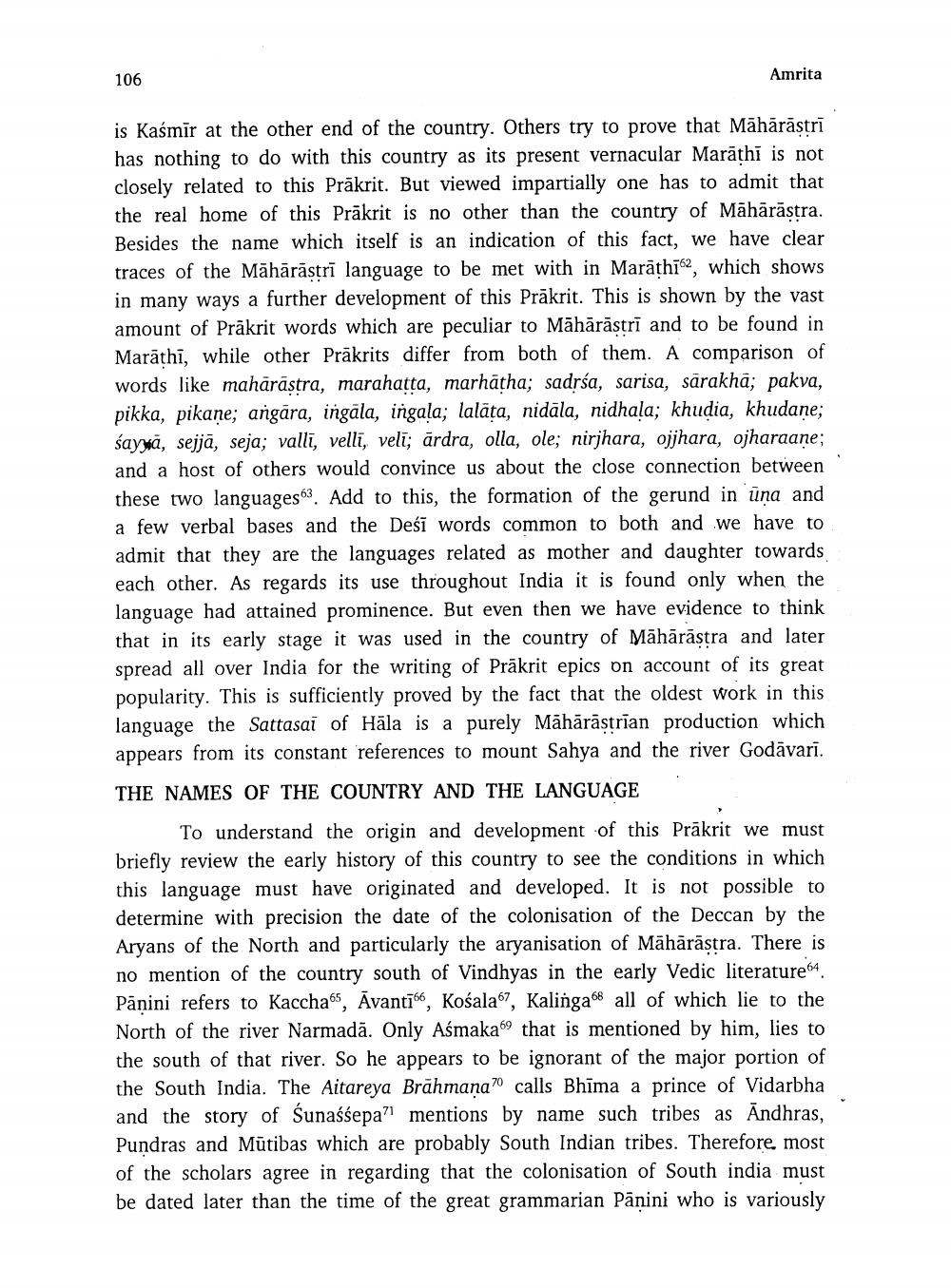________________
106
Amrita
is Kaśmīr at the other end of the country. Others try to prove that Māhārāstrī has nothing to do with this country as its present vernacular Marathi is not closely related to this Prākrit. But viewed impartially one has to admit that the real home of this Prākrit is no other than the country of Māhārāstra. Besides the name which itself is an indication of this fact, we have clear traces of the Māhārāstrī language to be met with in Marāthī62, which shows in many ways a further development of this Prākrit. This is shown by the vast amount of Prakrit words which are peculiar to Māhārāstri and to be found in Marāthi, while other Prākrits differ from both of them. A comparison of words like maharastra, marahatta, marhatha; sadrśa, sarisa, sārakhā; pakva, pikka, pikane; angāra, ingāla, ingala; lalāta, nidāla, nidhala; khudia, khudane; saymā, sejjā, seja; valli, velli, veli; ārdra, olla, ole; nirjhara, ojjhara, ojharaane; and a host of others would convince us about the close connection between these two languages63 Add to this, the formation of the gerund in ūna and a few verbal bases and the Deśī words common to both and we have to admit that they are the languages related as mother and daughter towards each other. As regards its use throughout India it is found only when the language had attained prominence. But even then we have evidence to think that in its early stage it was used in the country of Māhārāstra and later spread all over India for the writing of Prākrit epics on account of its great popularity. This is sufficiently proved by the fact that the oldest work in this language the Sattasai of Hāla is a purely Māhārāstrian production which appears from its constant references to mount Sahya and the river Godāvarī. THE NAMES OF THE COUNTRY AND THE LANGUAGE
To understand the origin and development of this Prākrit we must briefly review the early history of this country to see the conditions in which this language must have originated and developed. It is not possible to determine with precision the date of the colonisation of the Deccan by the Aryans of the North and particularly the aryanisation of Māhārāstra. There is no mention of the country south of Vindhyas in the early Vedic literature64. Pāņini refers to Kaccha65, Avanti, Kośala67, Kalinga6 all of which lie to the North of the river Narmadā. Only Aśmaka69 that is mentioned by him, lies to the south of that river. So he appears to be ignorant of the major portion of the South India. The Aitareya Brāhmana' calls Bhīma a prince of Vidarbha and the story of Sunaśśepa? mentions by name such tribes as Āndhras, Pundras and Mūtibas which are probably South Indian tribes. Therefore, most of the scholars agree in regarding that the colonisation of South india must be dated later than the time of the great grammarian Panini who is variously




